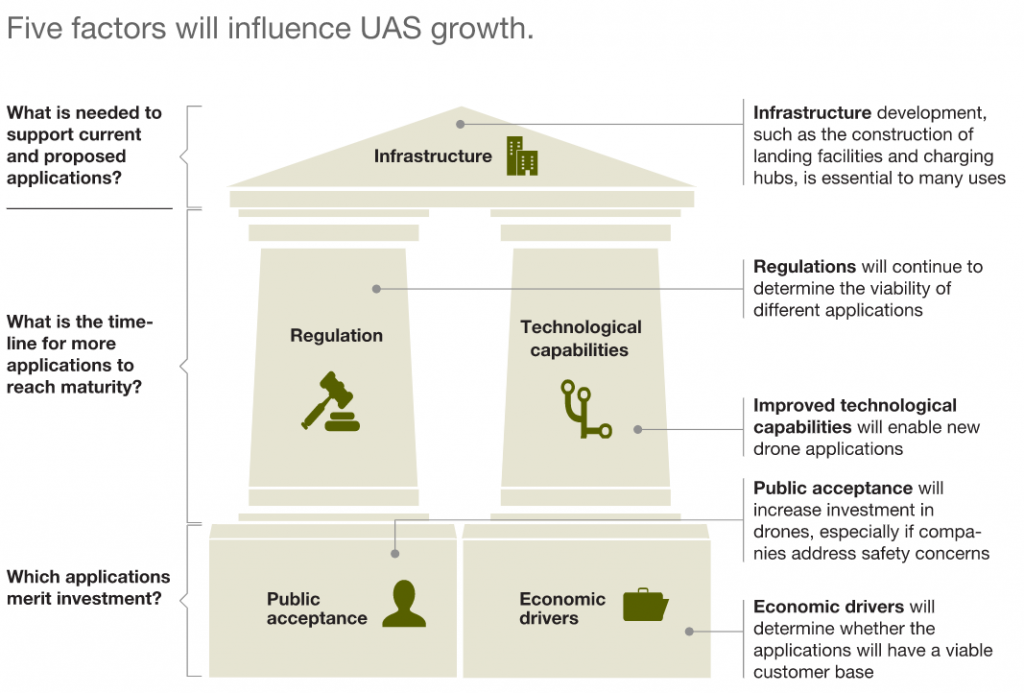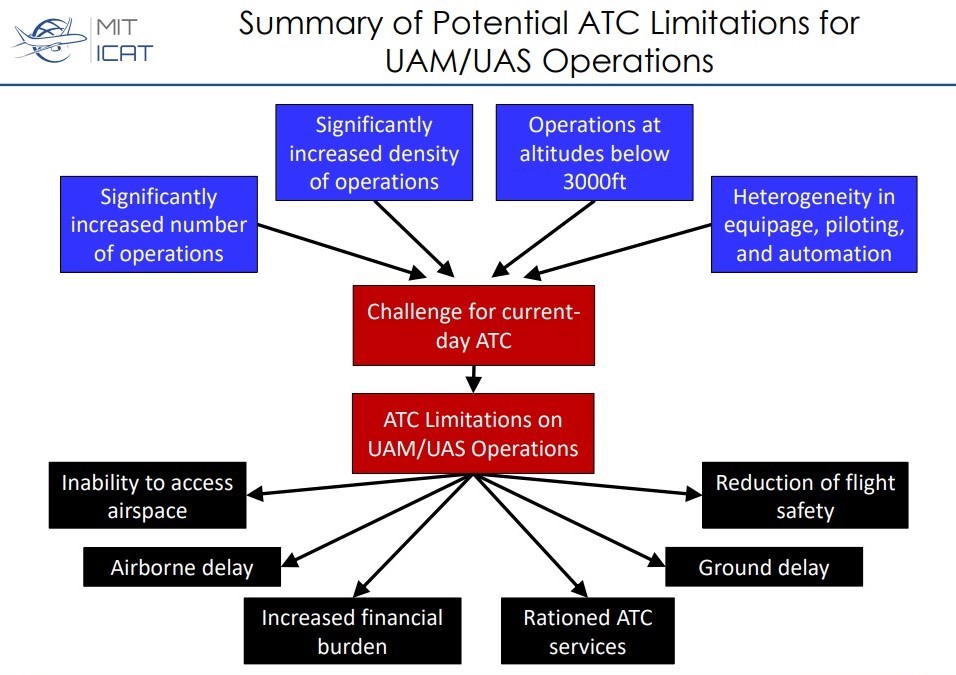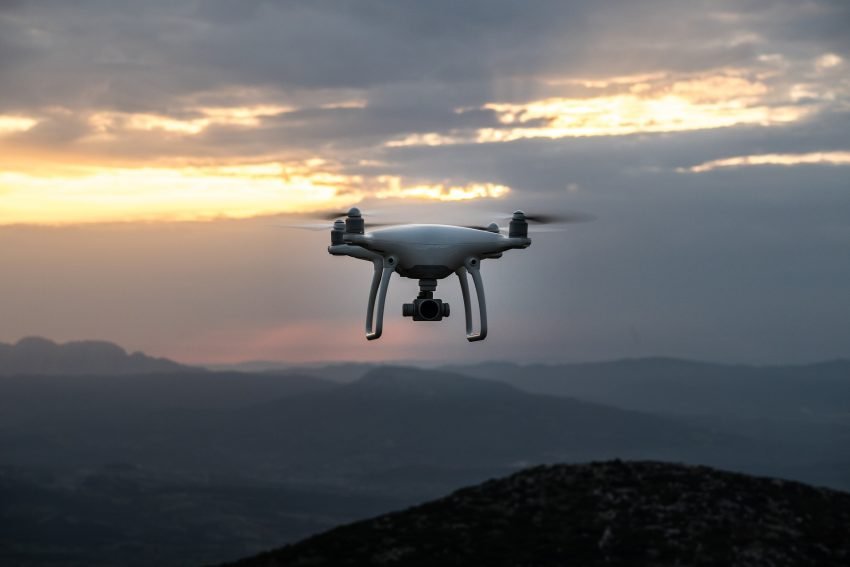Urban air mobility (UAM) and unmanned aerial systems (UAS) are arguably two of the aviation industry’s most exciting and promising developments. However, a drone spotted too close to an airport runway last year led to over 1,000 cancelled flights and more than 140,000 affected passengers. Expectations for UAM and UAS capabilities are boundless, but their safe implementation needs more regulation and support.
[blockquote text=”A major challenge, especially in the development of high altitude UAS, is air traffic management” text_color=”#004361″ show_quote_icon=”yes”][vc_separator type=’transparent’ position=’center’ color=” thickness=’5′ up=” down=”]
Current Implementation Challenges
The concept of UAM in metropolitan areas includes passenger services as well as aircraft operations for other activities, such as public safety, medical and rescue services, news gathering, ground traffic assessment, weather monitoring, and package delivery. There are currently many interesting UAM projects in the development of both manned and unmanned operations, from on-demand helicopter services in South America to small UAS (sUAS) delivery of medical supplies to remote clinics in Rwanda.

There are, however, multiple barriers to overcome in the successful and safe implementation of UAM and UAS operations. The current challenges range from sufficient ground infrastructure, such as vertiports and charging/refuelling stations, to noise and other nuisances to the general public caused by urban air traffic. Moreover, flight authorisation depends on the certification of the pilots, vehicles and operations, many of which have not yet been defined, let alone granted. A major challenge, especially in the development of high-altitude UAS, is air traffic management.
Managing UAM & UAS Operations
UAM aircraft can be designed to be operated by an on-board pilot, an operator on the ground, or even fully autonomous. Large-scale UAM operations will certainly exceed the current capabilities (pdf) of ATC to control them.

With the growing interest in the possibilities for UAM/UAS, key players in the industry, including NASA (pdf) and the FAA in the US, are working on a UAS traffic management (UTM) system for low altitude sUAS operations that will integrate into the national airspace.
For flights below 400 feet, the UTM systems direct flight paths interactively to avoid collisions with obstacles and other drones. However, applications of UAS that require longer and higher altitude flight (air taxi, freight-delivery and long-range medical service drones, for example) will need a UTM system that can also communicate with the ATC systems for commercial aircraft to facilitate their integration into controlled national airspace
Creating UAM-Friendly Environments
Attention to the intricacies of how aviation policy, airspace design, traffic management and operational safety all fit together will be an important factor in unlocking the maximum potential of UAM/UAS. For example, ANSPs will need new concepts of operation and understand how airspace could be redesigned to accommodate UAM/UAS applications.
While the technologies for advanced UAM and UAS applications may not yet be fully developed, it is important that both the public and private sectors already start to consider the cooperative and compliance elements needed for UAM to be successful. Much of the necessary regulatory aspects still need development in many countries, including here in Thailand. Getting these up to speed for a UAM-friendly environment will certainly require a clear, in-depth understanding of the wide range of operational and safety issues that affect both sides.
About To70. To70 is one of the world’s leading aviation consultancies, founded in the Netherlands with offices in Europe, Australia, Asia, and Latin America. To70 believes that society’s growing demand for transport and mobility can be met in a safe, efficient, environmentally friendly and economically viable manner. To achieve this, policy and business decisions have to be based on objective information. With our diverse team of specialists and generalists to70 provides pragmatic solutions and expert advice, based on high-quality data-driven analyses. For more information, please refer to www.to70.com.

